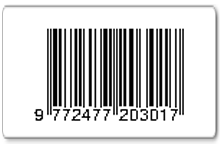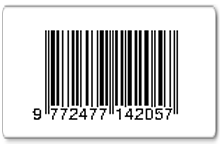Utilization of Open-Ended Problems Model to Analyze Students’ Creative Thinking Ability on Electrochemistry Lesson
Abstract
The objective of the present research is to study students’ achievement in creative thinking ability and to determine the level of their ability in creative thinking in electrochemistry through open-ended problems model. The method used in this research is Descriptive Study. The sample of this research is 12th grade students majoring in Science of SMAN 3 South Tangerang which consist of 28 students. The sample taken are students of 12th grade majoring in science from selected classes; they have higher scores in daily test compared to 4 other classes. This was simply for convenience of studying the learning process and the implementation of open-ended model problem in this study. The data of this research was acquired from observation sheet, test and interview. In this research the achievement of student’s creative thinking ability was focused on three aspects of creative thinking: fluency, flexibility and originality. The result showed that student’s achievement on fluency was good, flexibility was average and originality was average. Meanwhile, the open-ended test result showed that student’s achievement on fluency was good, flexibility was average and originality was also average. Level of student’s ability in creative thinking was categorized as very poor, poor and average. Number of students in each category was 10 students (35.71%) in very poor category, 17 students (60.71%) in poor category, and 1 student (3.57%) in average category.
Keywords
Full Text:
PDFReferences
Aizikovitsh-Udi, E & Amit, M 2011, ‘Developing the skills of critical and creative thinking by probability teaching’, Procedia - Social and Behavioral Sciences. E, vol.15, pp. 1087–91.
Awang, H & Ramly, I 2008, ‘Creative Thinking Skill Approach Through Problem-Based Learning : Pedagogy and Practice in the Engineering Classroom’, International Journal of Human and Social Sciences, vol.2, no.4, pp. 334–9.
Bono 2007, Revolusi Berpikir, PT Mizan Pustaka, Bandung.
Chena, A, Dong, L, Liu W, Li, X, Sao T, & Zhanga, J 2015, ‘Study on the mechanism of improving creative thinking capability based on Extenics’, Procedia Computer Science, vol.55, pp. 119–25.
Ersoy, E & Başer, N 2014, ‘The Effects of Problem-based Learning Method in Higher Education on Creative Thinking’, Procedia - Social and Behavioral Sciences, vol.116, pp. 3494–98.
Hürsen, Ç, Kaplan, A, & Özdal, H 2014, ‘Assessment of Creative Thinking Studies in Terms of Content Analysis’, Procedia-Social and Behavioral Sciences, vol.143, pp. 1177–85.
Kashefi, H, Ismail, Z, & Yusof, YM 2012, ‘Supporting Engineering Students’ Thinking and Creative Problem Solving through Blended Learning’, Procedia - Social and Behavioral Sciences, vol.56, pp. 117–25.
Kuspriyanto, B & Siagian, S 2013, ‘Strategi Pembelajaran dan Kemampuan Berpikir Kreatif terhadap Hasil Belajar Fisika’, Jurnal Teknologi Pendidikan, vol.6, no.2, pp. 134–40.
Laisema, S & Wannapiroon, P 2014, ‘Design of Collaborative Learning with Creative Problem-solving Process Learning Activities in a Ubiquitous Learning Environment to Develop Creative Thinking Skills’, Procedia - Social and Behavioral Sciences, vol.116, pp. 3921–26.
Munandar, SCU 1992, Mengembangkan bakat dan kreativitas anak sekolah: penuntun bagi para guru dan orang tua, Grasindo, Jakarta.
Nahadi, Siswaningsih, W, & Maliga, I 2015, ‘Pengembangan dan Analisis Tes Kimia Berbasis Open-Ended Problem untuk Mengukur Kemampuan Berpikir Kreatif Siswa’, Seminar Nasional Kimia dan Pendidikan Kimia VII, UNS, Surakarta.
Nisa, KW 2013, ‘Pengaruh Pendekatan Open-Ended Terhadap Kemampuan Berpikir Kreatif Siswa pada Materi Listrik Dinamis Kelas X di SMAN 1 Gondang Tulungagung’, Jurnal Inovasi Pendidikan Fisika, vol.2, no.3, pp. 143–6.
Noor, J 2011, Metodologi Penelitian, Kencana Prenada Media Grup, Jakarta.
Piaw, CY 2014, ‘Effects of Gender and Thinking Style on Student’s Creative Thinking Ability’, Procedia-Social and Behavioral Sciences, vol.116, pp. 5135–39.
Piaw, CY 2010, ‘Building a test to assess creative and critical thinking simultaneously’, Procedia-Social and Behavioral Sciences, vol.2, pp. 551–9.
Republic of Indonesia 2013, 'Peraturan Menteri Pendidikan dan Kebudayaan No. 69 2013 tentang Kerangka Dasar dan Struktur Kurikulum Sekolah Menengah Atas/Madrasah Aliyah, State Secretariat, Jakarta.
Riduwan 2010, Dasar-dasar Statistika, Alfabeta, Bandung.
Sani, RA 2013, Pembelajaran Saintifik untuk Implementasi Kurikulum 2013, PT Bumi Aksara, Jakarta.
Sayadian, S & Lashkarian, A 2015, ‘EFL Learners’ Creative Thinking and their Achievement Emotions’, Procedia-Social and Behavioral Sciences, vol.199, pp. 505–9.
SCANS 1991, What Work Requires of Schools, U.S. Departement of Labor, America.
Sekerci, AR & Canpolat, N 2014, ‘Impact of Argumentation in the Chemistry Laboratory on Conceptual Comprehension of Turkish Students Impact of Argumentation in the Chemistry Laboratory on Conceptual’, EDUPIJ, vol.3, no.1-2, pp. 19–34.
Setiawan, RH & Harta, I 2014, ‘Pengaruh Pendekatan Open-Ended dan pendekatan Kontekstual terhadap Kemampuan Pemecahan Masalah dan Sikap Siswa terhadap Matematika’, Jurnal Riset Pendidikan Matematika, vol.1, no.2, pp. 202–15.
Silver, EA 1997, ‘Fostering creativity through instruction rich in mathematical problem solving and problem posing’, Zentralblatt für Didaktik der Mathematik, vol.29, no.3, pp. 75–80.
Siswono, TYE 2011, ‘Level of student’s creative thinking in classroom mathematics’, Educational Research and Review, vol.6, no.7, pp. 548–53.
Songkram, N & Puthaseranee, B 2015, ‘E-learning System in Virtual Learning Environment to Enhance Cognitive Skills for Learners in Higher Education’, Procedia-Social and Behavioral Sciences, vol.174, pp. 776–82.
Surif, J, Ibrahim, NH & Dalim, SF 2014, ‘Problem Solving: Algorithms and Conceptual and Open-ended Problems in Chemistry’, Procedia - Social and Behavioral Sciences. vol.116, pp. 4955–63.
Wardani, NS 2013, ‘Pengaruh Penggunaan Sumber Belajar terhadap Kreativitas Belajar Tema Lingkungan Mahasiswa PGSD Angkatan 2012’, in Prosiding Seminar Nasional Penelitian dan Penerapan MIPA, Fakultas MIPA,Universitas Negeri Yogyakarta, pp. 53–59.
Yani, A 2014, Mindset Kurikulum 2013, Alfabeta, Bandung.
DOI: http://dx.doi.org/10.30870/jppi.v4i2.3620
Refbacks
- There are currently no refbacks.
Copyright (c) 2018 Jurnal Penelitian dan Pembelajaran IPA

This work is licensed under a Creative Commons Attribution 4.0 International License.
Jurnal Penelitian dan Pembelajaran IPA is licensed under a Creative Commons Attribution 4.0 International License
Copyright © 2025 Jurnal Penelitian dan Pembelajaran IPA. All rights reserved.






